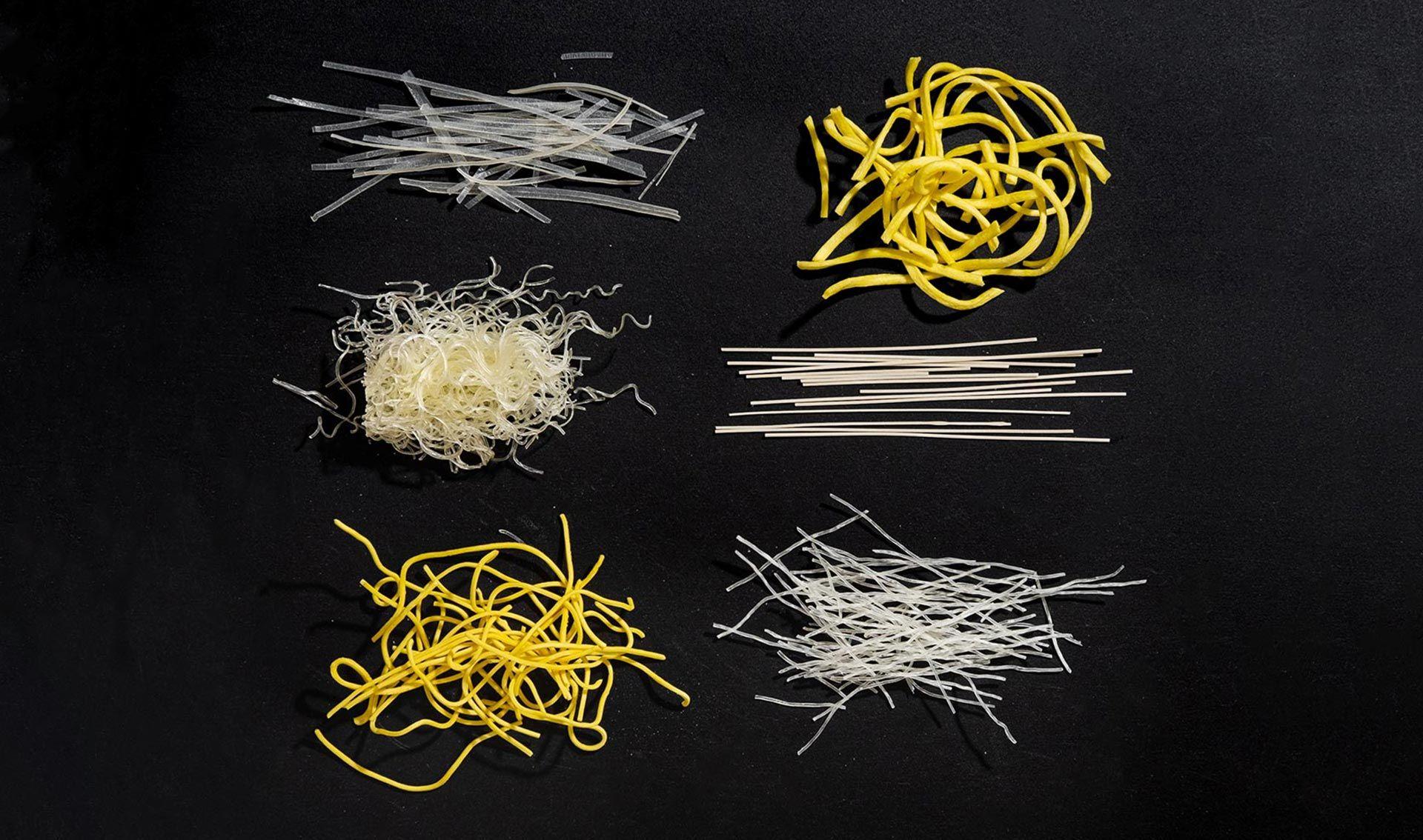There’s no denying Filipinos’ affinity for pancit noodles. We have these babies in all celebrations. Not eating it during birthdays means denying a person of long life, according to local superstitions. So, naturally, we’ve got an abundance of different pancit dishes, each one with its corresponding (or at least recommended) pancit noodles.
This guide breaks down seven different pancit noodles and where to use them.
Bihon
Bihon are thin rice noodles made using cornstarch, rice flour, and water. These are great to use for a variety of dishes, and can be used in anything that needs rice noodles. You can saute them for a regular pancit or add them to soup dishes. It’s also commonly used for—surprise—Pancit Bihon.
Canton
Canton is a type of pancit noodle made using wheat flour and eggs. They’re pretty similar to spaghetti noodles, just a little bit more flimsy. You can use them for all kinds of pancit dishes as they hold up very well when stir-fried.
Lomi
Lomi referes to wide, thick egg noodles. Like traditional ramen noodles, they’re soaked in lye water to give them a distinct yellow hue and springy texture. We usually use lomi to make Pancit Lomi, a saucy, borderline-soup pancit dish.
Miki
Miki are also egg noodles, but made with all-purpose flour. These can either come flat or round in shape, and are offered in supermarkets either dry or wet. That said, miki is more commonly sold in palengkes (wet markets) fresh, salted, and partially cooked. That way, you can use them immediately.
Misua
Misua are an extremely thin variety of salted noodles made from wheat flour. These are usually served in soups, such as almongdigas.
Rice Noodles
Rice noodles are a type of pancit noodle made from rice flour and water; some also include tapioca starch or cornstarch to increase its gelatinous and chewy texture. They’re sold flat and are more fragile than most noodles. You often don’t have to “cook” them (i.e. in boiling water over heat). Instead, you simply soak them in warm water to soften them before using them.
You’ll often find rice noodles used in Southeast Asian stir-fried noodles such as pad thai and pad see ew.
Sotanghon
Sotanghon or vermicelli noodles are very fine rice noodles that have a glassy look to them. They're soaked—not boiled—in hot water until soft. Some cut the noodles to shorter lengths after draining. They’re usually served in spring rolls, salads, and soups.
